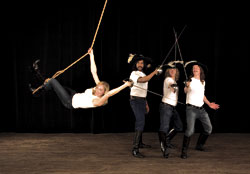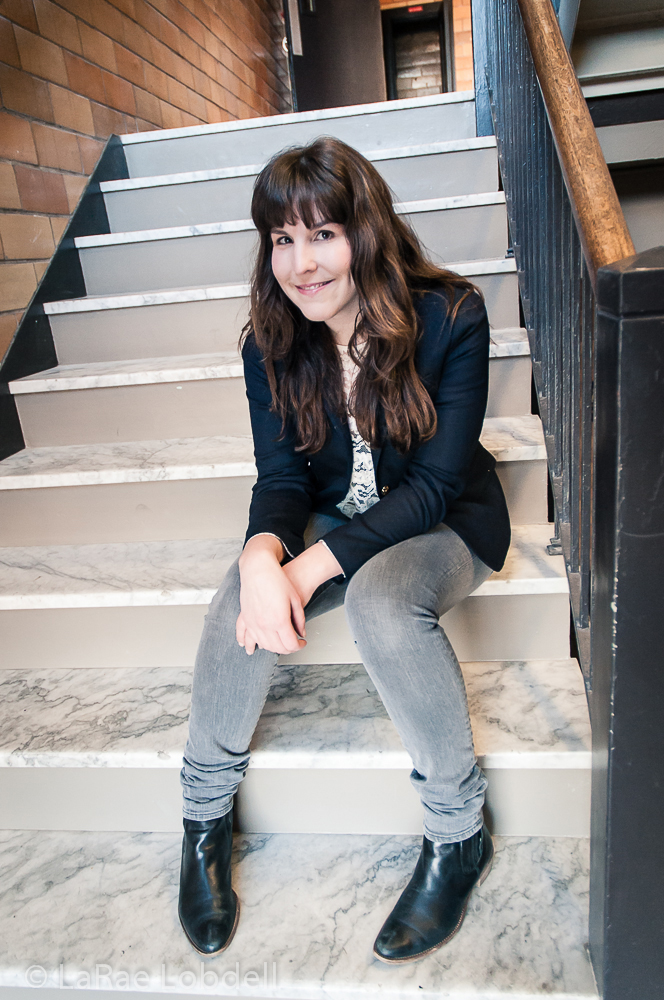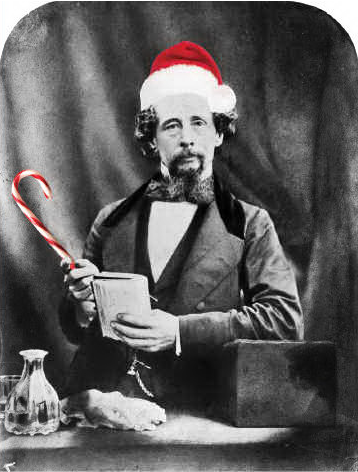Here’s the usual template for a theater’s annual brochure. Cover: a dominating graphic and a snappy seasonal motto. Inside page: an earnest message from the artistic director explaining that this season is the most exciting ever. Next: show descriptions, with big graphics, a short summary of each play, and maybe a fawning review or two. Round it out with the mission statement, some ticket prices, a seating chart, and a profile of the theater’s education department, and bam, you’re done. It’s as predictable and efficient as a mail-order catalog—which it is, basically.
Thankfully, Seattle Rep and ACT are at least trying something different this year. As the regional-theater system confronts a whole collection of headaches, from a lousy economy to an aging audience base, a certain reckless air has crept into their marketing, even regarding such tried-and-true elements as the season brochure.
ACT’s new brochure features a cover with two beautiful shots of the building’s gleaming-white façade. Open this, and what’s revealed are not pictures of plays or staff, but of the audience, well-dressed people standing with drinks in hands and smiles on their faces, chatting in the theater’s sumptuous upstairs lobby. “The play’s not the only thing,” declares the copy in one version. “Don’t just go out. Go places you’ve never been,” says the other. (One’s for past subscribers, the other is for potential subscribers.) It’s not until you open up the brochure fully that you even get to the shows.
The idea is brilliant. ACT’s greatest challenge is its size. Their vast downtown home in the converted Fraternal Order of Eagles building includes no less than three stages—four if you count the side room known as Buster’s (which has been the home of Late Night Catechism, closing this month after a decade-long run). To survive, ACT needs to do more than sell a few shows—it needs to sell audiences on that building. That’s what the new brochure tries to do, similar to the way all those half-empty downtown condos are working it: This isn’t just a place, it’s a destination and a lifestyle. With its emphasis on “come here and hang out,” the brochure also addresses the yearning for social connection that raises theater above most other entertainment choices. It’s effective. If I didn’t know already, I’d want to find out how I could be standing on that gold-and-scarlet carpet with all those smiling people.
But the Rep’s brochure is even better. Its snappy slogan—”Play a part”—admittedly isn’t all that snappy. But the cover is striking: It’s covered with faces, none of which I immediately recognize. Who are these people? Not actors, despite their costumes and the theatrical lighting. Not until you read artistic director David Esbjornson’s message is it explained: “In this brochure you will see everyone from our carpenters to our accountant ‘playing a part’ in representing the season line-up.”
The next few pages show a collection of administrators, stagehands, box-office staff, and others cavorting about on the Rep’s bare stage. That woman swinging from the rope in Three Musketeers is the theater’s donor-relations manager. The top-hatted Pozzo and the leashed Lucky from Godot? The IT director and the head flyman. It’s playful, more than a little weird, and the best argument I’ve seen in a long time for why institutions like the Rep deserve funding.
Administration types get a lot of grief these days—they’re practically the villains in Mike Daisey’s How Theater Failed America, which paints them as a parasitic accretion on the wonderful world created by artists. But what this brochure does is remind us just how dependent a large arts institution is on people who do the less-thrilling work that artists don’t do, from moving scenery to making phone sales—jobs that require just as much dedication as acting and directing, but are a lot less fun. And it reminds us that we have a part to play as well, as audience members. What the Rep is hoping is that it’s a part we’re up to taking, preferably as a season subscriber.








